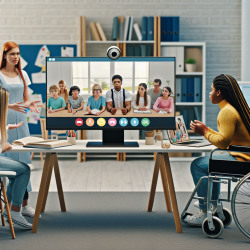Introduction
Dyslexia, a learning disorder characterized by difficulties with accurate and/or fluent word recognition and by poor spelling and decoding abilities, affects many children worldwide. The disorder is often linked to deficits in phonological processing, rapid naming, working memory, and processing speed. Despite these challenges, research indicates that specific interventions can significantly mitigate the effects of dyslexia. One promising intervention, as highlighted in the study by Helland et al. (2018), involves the use of a dichotic listening (DL) app.
Understanding Dichotic Listening
Dichotic listening is a non-invasive method used to study brain lateralization of speech perception. During a DL assessment, different auditory stimuli are presented to each ear simultaneously, and the subject is asked to report what they hear. This method helps in understanding the brain's language processing capabilities and has been applied to assess impairments in attention, working memory, and executive functions.
Research Insights
The study by Helland et al. (2018) explored the effects of DL training on children with dyslexia. The research involved three groups of third graders: two training groups (control training and dyslexia training) and a control group with no training. The results indicated that DL training could lead to a normalization of lateralization in children with dyslexia, suggesting that DL training may be a promising intervention approach.
Implications for Practitioners
For practitioners working with children with dyslexia, the findings from this study offer valuable insights. Implementing DL training can potentially improve the language processing abilities of children with dyslexia. Here are some practical steps practitioners can take:
- Incorporate DL training into existing intervention programs to enhance phonological processing and attention skills.
- Use DL apps that provide immediate feedback to keep children engaged and motivated.
- Monitor progress by assessing changes in language lateralization and attention modulation over time.
Encouraging Further Research
While the study provides promising results, further research is necessary to explore the long-term effects of DL training on literacy skills. Practitioners are encouraged to participate in or initiate studies that investigate the transfer effects of DL training to reading and writing skills. Collaboration with researchers can help refine intervention strategies and contribute to the development of evidence-based practices.
Conclusion
Dichotic listening training offers a novel approach to supporting children with dyslexia. By leveraging the insights from Helland et al. (2018), practitioners can enhance their intervention strategies and contribute to better outcomes for children with dyslexia. As we continue to explore the potential of DL training, collaboration between researchers and practitioners will be crucial in advancing our understanding and improving literacy outcomes for children with dyslexia.
To read the original research paper, please follow this link: Auditive training effects from a dichotic listening app in children with dyslexia.










